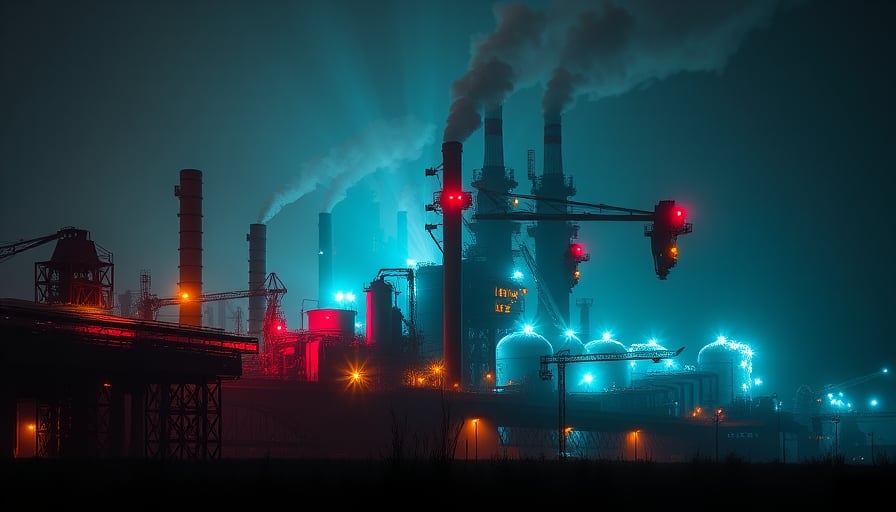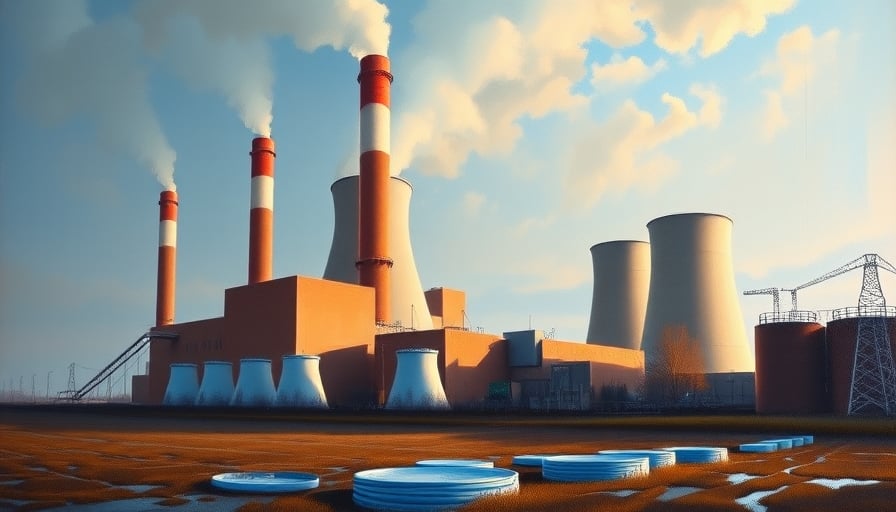Corporate News
Capital Expenditure Momentum in Heavy Industry Amidst Shifting Supply Chains
The past quarter has underscored a pronounced acceleration in capital outlays across the heavy‑industry sector, driven by a confluence of productivity imperatives, technological disruption, and evolving regulatory landscapes. Firms spanning steel, chemical, and power generation are deploying advanced manufacturing systems that promise higher throughput, lower operating costs, and enhanced compliance with tightening environmental standards.
Productivity Gains through Integrated Automation
A key driver of the current investment surge is the demonstrable return on productivity that integrated automation confers. High‑speed CNC machining centers, robotic assembly cells, and AI‑enabled predictive maintenance platforms have collectively improved machine uptime by 12–15 % and reduced cycle times by up to 25 % in benchmark facilities. For instance, the adoption of collaborative robots (cobots) in downstream processing has allowed manufacturers to maintain continuous production while simultaneously lowering labor intensity, thereby addressing skill shortages in mature markets.
Technological Innovation in Process Equipment
Several industry‑specific innovations are now reaching commercial maturity:
- High‑temperature superconducting (HTS) transformers are reducing transmission losses in petrochemical plants by up to 4 % and enabling tighter control over process heat loads.
- Digital twins for rolling mills and blast furnaces facilitate real‑time monitoring of temperature gradients and material properties, enabling operators to fine‑tune rolling schedules and reduce scrap rates by an estimated 3–5 %.
- Hybrid electric drive systems in marine and rail freight are cutting CO₂ emissions by 30 % while improving propulsion efficiency, thereby aligning capital investments with stricter emissions mandates.
These technologies not only boost output but also support firms in meeting ESG targets that are increasingly factored into financing decisions and stakeholder valuation.
Economic Drivers Behind Capital Expenditure
Several macroeconomic variables are influencing capital allocation:
- Rising commodity prices have amplified the cost of raw materials, compelling firms to invest in process efficiencies to maintain margins.
- Low interest rates continue to compress borrowing costs, making it financially viable to finance large‑scale equipment purchases and plant expansions.
- Supply chain disruptions exposed by the global pandemic have heightened the value placed on domestic production capabilities, encouraging investments in resilient, modular manufacturing units.
Capital intensity is expected to rise, with the average plant upgrade cycle shrinking from 8–10 years to roughly 5 years in the steel and chemical sub‑sectors.
Regulatory Impact and Infrastructure Spending
New regulatory frameworks—such as the European Union’s Carbon Border Adjustment Mechanism (CBAM) and the U.S. Inflation Reduction Act’s clean energy incentives—have spurred firms to re‑evaluate their asset portfolios. Compliance requirements are prompting upgrades in flue‑gas treatment equipment, carbon capture units, and renewable energy integration.
Simultaneously, infrastructure spending at national and regional levels has bolstered the supply chain. Expanded port capacities, rail electrification projects, and high‑bandwidth fiber networks reduce bottlenecks and enable real‑time data acquisition for industrial IoT platforms. This synergistic effect enhances operational visibility and accelerates the return on investment for new equipment.
Market Implications and Outlook
Investors are increasingly factoring in the capital intensity of heavy‑industry firms into valuation models. Companies that demonstrate disciplined capital deployment, coupled with technology adoption, are positioned to capture higher growth rates. Conversely, firms lagging in digital transformation risk falling behind in cost competitiveness and ESG performance.
Short‑term market dynamics are likely to reflect the interplay between commodity price volatility, policy shifts, and the pace of capital deployment. However, the long‑term trajectory remains firmly tilted toward sustained investment in automation, digitalization, and low‑carbon technologies.
In conclusion, the heavy‑industry sector is at a pivotal juncture where engineering advancements and capital discipline converge to shape the next era of industrial productivity and sustainability.




